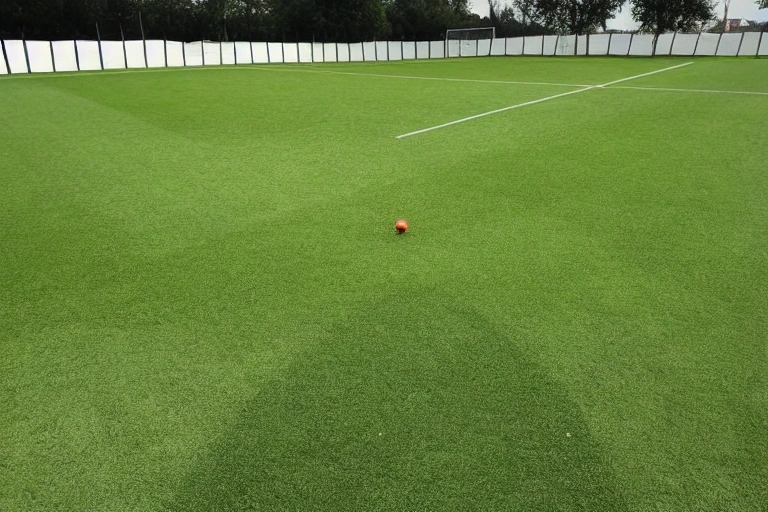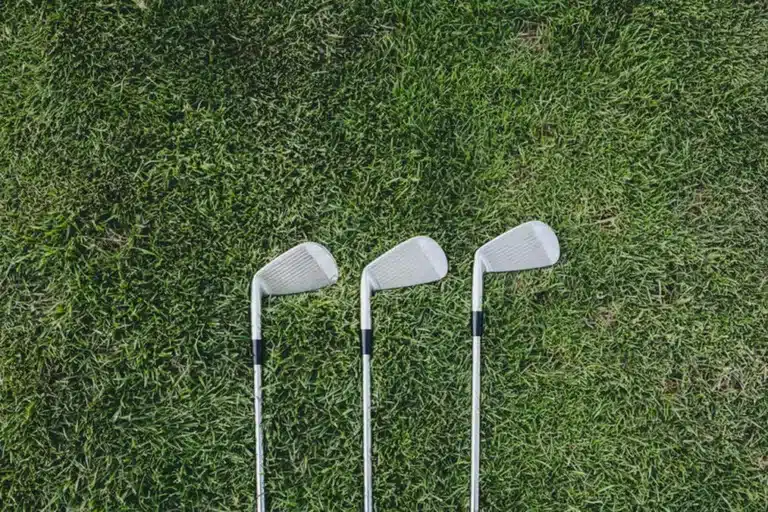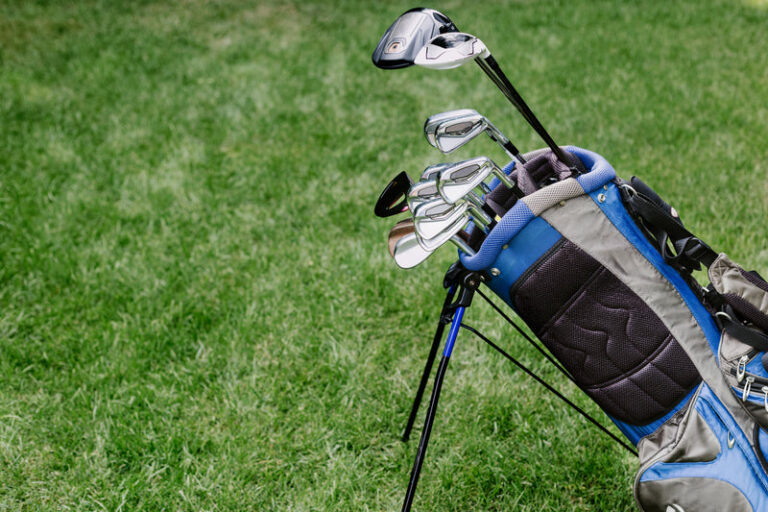The Best Golf Clubs for the Intermediate Golfer in 2023
Are you an intermediate golfer looking to take your game to the next level? If so, you’ll need the right gear to do it! In this blog post, we’ll discuss the best golf clubs for intermediate players and what sets them apart from beginner-level clubs. Keep reading to find out which golf clubs can help you reach your goals and make your game even better!
Introduction to Intermediate Golfers
For golfers who are just starting, the best golf clubs for them may be those that are intermediate in design. Intermediate clubs have a looser grip than full-sized clubs and are meant to help new players ease into the game. In addition, they typically have a narrower clubface, which makes it easier to hit shots close to the ground.
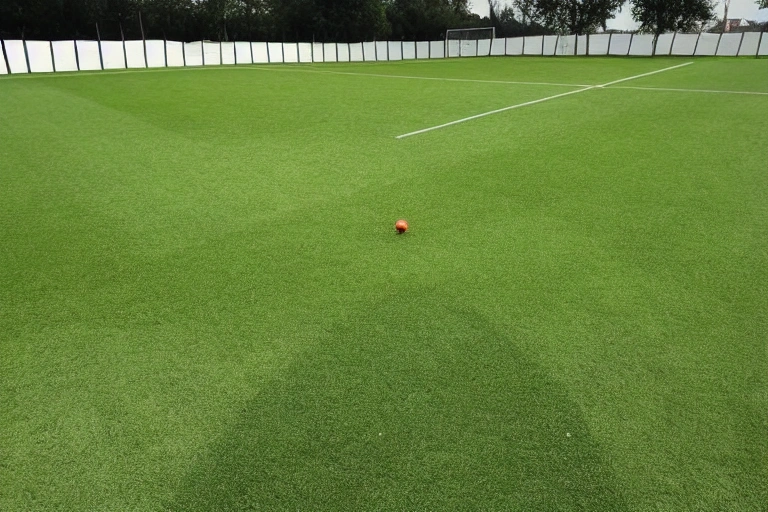
Types of Clubs for Intermediate Players
When it comes to golf clubs, there are many options for intermediate players. The best golf clubs for intermediate players will vary depending on their skill level and playing style. However, there are a few general types of clubs that are popular among intermediate golfers.
One popular type of club for intermediate players is the hybrid club. Hybrids are a good option for golfers who want to improve their distance but don’t want to sacrifice their accuracy. They’re also a good option for golfers who want to try different clubs without investing in a full set.
Another popular type of club for intermediate players is the fairway wood. Fairway woods are a good option for golfers who want to hit long shots but also want to keep their accuracy high. They’re also a good option for golfers who want to improve their game speed.
Finally, another popular type of club for intermediate players is the driver. Drivers are a good option for golfers who want to hit long shots with high accuracy. They’re also a good option for golfers who want to improve their game speed.
The Benefits of Investing in Quality Clubs
When you’re an intermediate golfer, you may be wondering what type of clubs will give you the best results. Quality clubs will provide better accuracy and distance, so it’s important to invest in something that will give you the best results. Here are some of the benefits of investing in quality golf clubs:
- Better Accuracy: Quality golf clubs will provide better accuracy and distance because they are made from better materials. This means that you’ll be able to hit the ball further and with more accuracy.
- Longer Range: Quality golf clubs also tend to have longer ranges, which means that you’ll be able to hit the ball further than with cheaper clubs. This is especially important if you’re looking to improve your game overall.
- More Enjoyment: Quality golf clubs also tend to be more enjoyable to use, which can lead to a higher level of play overall. This is because they’re designed to fit your individual needs and preferences.
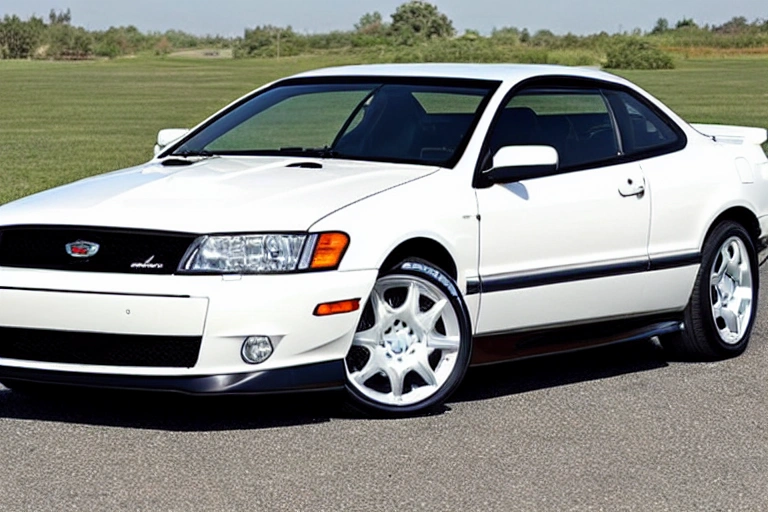
Driver Reviews: Which is Best?
Investing in the best golf clubs for an intermediate golfer can greatly improve your game. Drivers provide the power to hit far off the tee and into the green, while hybrids and woods provide varying degrees of forgiveness when it comes to hitting less-than-perfect shots. Choosing the right club for you can be tricky, but our reviews will help you find the perfect set.
Iron and Wedge Reviews: What You Need to Know
Choosing the Right Shaft Flex
Deciding which clubs are best for an intermediate golfer is a difficult task. There are a lot of factors to consider, such as the type of terrain you will be playing on and your swing. One thing you should keep in mind is the shaft flex. This refers to the stiffness of the club head.
If you have a stiffer swing, then you will want to opt for a club with more flex. Conversely, if your swing is looser, then choosing a more rigid club might be better for you. Another factor to consider when selecting golf clubs is the weight of the club head and shaft. Lighter clubs are often easier to hit due to their quick reaction time; however, they may not be as powerful. Heavier clubs will hit the ball harder, but they may be less forgiving if you make a mistake.
When shopping for clubs, it’s important to experiment and find ones that fit your unique swing and playing style. No one club is perfect for everyone; Experiment until you find the right set of clubs for you!
Finding the Optimal Loft Angle
There is no one right answer when it comes to loft angles for golf clubs. You’ll need to experiment to find what works best for you. However, there are a few general tips that can help you get started.
Start by trying different loft angles in your driver. A loft angle of 30 degrees will produce a higher ball flight than a loft angle of 35 degrees. Experiment with different loft angles in your driver until you find one that produces the ball flight you’re looking for.
Next, try different loft angles in your irons. A loft angle of 45 degrees will produce a higher ball flight than a loft angle of 50 degrees. Experiment with different loft angles in your irons until you find one that produces the ball flight you’re looking for.
Finally, try different loft angles in your wedges. A loft angle of 55 degrees will produce a higher ball flight than a loft angle of 60 degrees. Experiment with different loft angles in your wedges until you find one that produces the ball flight you’re looking for.
Investing in Quality Clubs
If you’re an intermediate golfer who’s looking to add a few more strokes to your game, consider investing in quality golf clubs. Not all players have the same needs when it comes to golf clubs, so it’s important to research what options are best for you.
Driver reviews: Which is best?
When shopping for golf clubs, you’ll want to start by considering the type of driver that you have. There are three main types of drivers on the market today – irons, woods, and hybrids. The biggest difference between these drivers is their weight and length. Irons are designed as purely clubbing drivers while woods and hybrid clubs typically contain both a clubbing driver and a slicing or hitting head. For most players, choosing the right driver is the most important decision they’ll make when purchasing golf clubs.
Woods and hybrids are great for players who want to hit a variety of shots, from short irons to long woods. Hybrids are especially good for guys who struggle with spin – they can take some of the stings out of the ball. Woods are perfect for those Accuracy shots where you need a little more sweet spot on your drive. Regardless of your driver, it’s always important to test them out in a local driving range before buying.
Iron reviews: What you need to know
Almost everyone struggles at one point or another when trying to strike the ball straight off the tee – this is especially true for beginners and intermediate players alike. Iron reviews are a great way to pinpoint your club’s weaknesses and improve upon them. The following are four key things that you need to know about irons when shopping for golf clubs:
- Your iron should be of the right weight – Too heavy an iron will slow your ball down, while a lightweight iron will make it fly further off the tee.
- Iron length is important – Varied lengths offer hitters different strike points on their shots, which can help you hit straighter shots. In addition, irons with bigger faces (like Pings) tend to hook more than other clubs due to their larger sweet spot.
- Face geometry is also very important – An overly complex face will lead to inconsistency in your strikes, as well as a loss of distance. A simple, well-shaped face will allow you to hit the ball straighter with less effort.
- Your iron should be fitted to your swing – Different irons work better for different swing types, so it’s important to try out a few different clubs before making a purchase.
Wedge reviews: What you need to know
Wedges are one of the most versatile golf clubs in your bag. They can be used for a variety of shots, from short pitches to long putts. Like irons, wedges come in a variety of weights and lengths. The following are four key things that you need to know about wedges when shopping for golf clubs:
- Wedge length is important – A shorter wedge will help you hit more accurate pitches, while a longer wedge will give you more control over long putts.
- Wedge face geometry is also important – A too-simple face will lead to inconsistency in your strikes, while a too-complicated face will make it difficult to control your shots.
- Wedge weight is also important – Heavier wedges will help you hit straighter shots, while lighter wedges will give you more control.
- Your wedge should be fitted to your swing – Different wedges work better for different swing types, so it’s important to try out a few different clubs before making a purchase.
Considering Different Club Types
If you have been playing golf for a while and are now looking to take your game to the next level, then you may be considering investing in the best golf clubs for the intermediate golfer. In this article, we will discuss what types of clubs are best for intermediate players, as well as provide reviews of some of the most popular options on the market.
When it comes to choosing which club type is right for you, it all comes down to personal preference. However, if you are new to the game or just want some guidance on what is likely to work best for your skills and limitations, then consider one of the following club types: driver, iron set (wooden or metal), hybrid club (driver/iron) and wedge.
Driver Reviews: Which is Best?
If you are looking for a club that will give you the most distance and accuracy, then the driver is likely the best option for you. Drivers come in a variety of shapes and sizes, so there is sure to be one that fits your needs. Additionally, drivers are relatively easy to control, so even beginners can hit them well.
If you are looking for a driver that will give you more power, then you may want to consider an iron set. Iron sets come with a club head that is made from metal, which gives them more power and distance. They are also easier to control than drivers, so even beginners can hit them well.
Hybrid clubs combine the best of both worlds. They have a driver-like head that gives you the distance and accuracy you need, while also providing the power and control of an iron set.
Wedge Reviews: What You Need to Know
Wedge clubs are designed to give you more control and accuracy when hitting the ball off the green. They are also designed to help you hit the ball higher off the ground, which can give you a better chance of getting up and down from the green.
When choosing a wedge, it is important to consider your swing type and your limitations. If you have a strong backswing, then a deep-face wedge is likely to work best for you. If you have a weak backswing, then a shallow-face wedge may be a better option.
Additionally, you should consider your playing level and your limitations. If you are a beginner, then a softer wedge is likely to work best for you. As you progress, you may want to consider a harder wedge that will give you more control and accuracy.
Putter Selection Criteria for Intermediates
Inexpensive Clubs for Intermediates
For newcomers to the sport of golf, inexpensive clubs can be a godsend. After all, you’re not looking for the best-performing clubs on the market; you just want something that’ll get the job done and won’t break the bank. Additionally, a good number of more experienced golfers prefer less expensive clubs because they tend to be lighter and are easier to swing. While this is not always true – there are high-quality, low-priced golf clubs available – it is generally a good rule of thumb.
When selecting inexpensive golf clubs for intermediates, there are several key things to keep in mind:
- The clubhead shape should be CONSIDERED when making your purchase as some shapes perform better than others at low club weights. The most common shapes are round, hexagon, and domed.
- Weight should also be considered when selecting an inexpensive golf club because the lighter the club, the easier it will be to swing. For beginners, we recommend choosing a lightweight club with a forgiving head shape. As you improve your skills, you can switch to a heavier club that will help boost your ball flight.
- Durability is another important factor when purchasing an inexpensive golf club as they may be used more than expected in beginner drills and exercises. We always recommend buying a quality golf glove to protect your hands as well as any other equipment you use during practice swings.
While these are some key points to keep in mind when purchasing inexpensive golf clubs, several clubs fall into this category without any of these particular requirements. So, take your time when searching for the perfect club, and don’t be afraid to try out several different models to find the perfect fit.
What to Look for When Shopping
Intermediate golfers are typically looking for clubs that will give them a good balance of distance and accuracy. There are a variety of club types to choose from, so it’s important to consider what you need before making a purchase.
One of the most popular club types for intermediates is the hybrid. Hybrids are a good option for golfers who want to hit a long ball, but also want to be able to hit some shorter shots accurately. They’re also a good choice for golfers who want to improve their accuracy without sacrificing distance.
If you’re looking for a more versatile club, you might want to consider iron. Irons are great for golfers who want to hit a variety of shots, from short to long. They’re also a good option for golfers who want to improve their distance without sacrificing accuracy.
If you’re new to the game, it’s important to start with a forgiving club. A beginner’s club is usually made out of softer materials, which means it’ll be easier for you to hit the ball straight.
When shopping for a golf club, it’s important to consider your personal preferences and needs. You should also take into account your level of experience and your playing style.
Popular club Brands and Models
When shopping for golf clubs, intermediates should consider a few key factors. First, the golfer’s swing speed should be considered. Second, the golfer’s height and weight should be taken into account. Third, the golfer’s grip size and hand position should be considered. Fourth, the golfer’s budget should be considered. Finally, the golfer’s playing style should be considered.
One of the most important things to consider when shopping for golf clubs is swing speed. Golfers with a faster swing speed tend to hit the ball further than those with a slower swing speed. Golfers with a slower swing speed may want to consider buying clubs that are designed for a slower swing speed, such as hybrids or woods.
Golfers with a slower swing speed should also consider buying clubs that are designed for a slower swing speed, such as hybrids or woods. However, golfers with a faster swing speed may also want to consider buying clubs that are designed for a faster swing speed, such as irons or woods.
Golfers with a slower swing speed may also want to consider buying clubs that are designed for a slower swing speed, such as hybrids or woods. However, golfers with a faster swing speed may also want to consider buying clubs that are designed for a faster swing speed, such as irons or woods.
Golfers with a slower hand position may want to buy clubs with longer shafts. Golfers with a faster hand position may want to buy clubs with shorter shafts.
Golfers with a slower hand position may want to buy clubs with longer shafts. Golfers with a faster hand position may want to buy clubs with shorter shafts.
Golfers with a budget should take into account the club’s price and its quality. Higher-quality clubs typically cost more, but they are usually worth it in the long run. However, lower-quality clubs can be less expensive and still provide good performance.
Lastly, golfers should consider their playing style when selecting golf clubs. For example, those who play mostly short shots may prefer irons, while those who play mostly long shots may prefer hybrids or woods.
Considerations Before Buying New Clubs
There are many types of golf clubs available to intermediates, but each one is best suited for a different golfer. For example, those who prefer more distance may want to invest in a driver; those who like to score often with shorter shots may want an iron club; and so on. It’s important to consider all of the factors before deciding what type of golf club is right for you – including your ability level, playing style, and preferences. Here are some tips on choosing the best golf clubs for intermediates:
When thinking about which club to buy, consider the difficulty of your course and the distances you typically hit. If you play at a moderately difficult course that ranges from 300-500 yards in length, iron would be a good choice. If you play on a more difficult course that is 600 yards or longer, a driver may be a better option.
When choosing clubs, it’s important to match your ability level with the club you’re buying. For example, if you’re a beginner, it would be a bad idea to buy an iron. Instead, you should buy a club that is appropriate for your ability level.
Another important factor to consider is your playing style. For example, if you like to hit long shots, you’ll want to buy an iron. On the other hand, if you like to hit shorter shots, you’ll want to buy a club that is appropriate for that type of play.
Finally, consider your preferences. For example, some people like to ride the ball more than others. If that’s your style, you’ll want to buy a club with a higher loft.
Complete Set Shopping Tips for Intermediates
When shopping for a complete set of golf clubs, it is important to keep a few things in mind. First and foremost, it is important to find clubs that fit your abilities and style. Additionally, it is important to consider how often you plan on playing golf. If you primarily play once or twice a month, buying less expensive clubs may be the better option for you. Conversely, if you play more often, spending more money on higher-quality clubs will likely be worth your investment. Additionally, it is important to also take into account the environment in which you plan on playing golf. If you live in an area with heavy rainfall or humid conditions, choosing heavier-weight drivers may be ideal for you. Conversely, if dry weather and minimal humidity are your preferred environment, lighter-weight drivers may be a better choice.

Common Swing Faults & How to Fix Them
Finding the Right Loft Angle
One of the most common mistakes made by golfers of all levels is hitting the ball too high in the air. Hitting the ball too high in the air causes it to travel too far and curve out of bounds, resulting in a loss of strokes. To fix this problem, you’ll need to find the right loft angle for your swing. Too much loft will cause the ball to fly too high in the air, while too little loft will cause it to travel too low and curve out of bounds.
To find the right loft angle for your swing, start by taking a look at your current swing. Do you tend to hit the ball too high in the air? Are you hitting it too far? Are you hitting it with too much loft? Once you’ve determined which of these problems is causing the issue, try adjusting your loft angle accordingly. If hitting the ball too high in the air is still a problem, you may need to adjust your swing entirely to find the right loft angle that works best for you.
Selecting the Best Clubhead Design
Most golfers fall into one of two categories when it comes to clubhead design: “power hitters” or ” finesse hitters.” Power hitters prefer clubs with higher swing weights and smaller head sizes, while finesse hitters favor clubs with lower swing weights and larger heads. For intermediate golfers, the sweet spot for clubhead design is somewhere in between. Opt for a heavier swing weight if you’re hitting good shots with a big distance but need to work on your short game; go for a lighter weight if you’re struggling to make consistent contact but can hit long shots easily.
One common mistake intermediates make is swinging too hard, which leads to over-hitting Shots 1 and 2. To fix this flaw, start by making sure you’re swinging at the right speed. Too fast and you’ll over-hit Shots 1 and 2; too slow and you’ll struggle to get the clubhead moving. Next, make sure your grip is correct. If your hands are too close to the clubface, you’ll hit Shots 1 and 2 with too much power; if your hands are too far away, you’ll struggle to control the clubface. Finally, make sure your posture is correct. If you’re standing too tall, you’ll hit Shots 1 and 2 high; if you’re crouching too low, you’ll hit Shots 1 and 2 low.
Once you’ve fixed these three common swing faults, it’s time to select the best clubhead design for your game. For power hitters, choose clubs with a higher swing weight and smaller heads. These clubs will give you good distance but require more power to hit good shots; for finesse hitters, go for clubs with a lower swing weight and larger heads. These clubs are easier to control but don’t produce as much distance.
Deciding on a Putter Type
There are many different putters on the market, each with its unique features and benefits. However, no one putter is perfect for everyone. Ultimately, you’ll need to find one that fits your style and playing habits.
One common swing fault for intermediates is over-hitting the ball. To fix this, you’ll need to work on your alignment and posture. Make sure that you’re keeping your back straight and your shoulders down throughout your swing.
If you’re struggling to make consistent contact, consider switching to a putter with a deeper face. These putters tend to be more forgiving, allowing you to make more mistakes without costing you too much accuracy.
On-Course Improvement Strategies for Intermediates
Intermediate golfers can benefit from a variety of on-course improvement strategies, depending on their skills and abilities. One key strategy is to improve accuracy with your driver. Improving your short game can also help you make more putts, as well as save strokes on the green. Additionally, working on your chipping and putting can help you make more consistent shots overall.

Frequently Asked Questions (FAQs) About Golf Clubs For Intermediates
Best Overall Golf Club Sets for Intermediates
What is the best golf club set for an intermediate golfer?
There is no one-size-fits-all answer to this question, as the best golf club set for an intermediate golfer will vary depending on their playing style and abilities. However, some of the best golf club sets for intermediates include those from Titleist, Callaway, and Ping. All three brands offer a variety of clubs that are designed to fit a wide range of playing abilities. Additionally, all three brands offer a variety of price points, so you can find a set that fits your budget.
Evaluating Your Swing to Find the Perfect Fit
So you’re an intermediate golfer and you’re looking for better golf clubs. But where do you start? There are many different types of golf clubs to choose from, so it can be tough to know what will work best for your swing. Here are some tips to help you pick the perfect set of golf clubs.
First, take into account your playing style. Are you a power hitter who likes to drive the ball far off the tee? Or are you a finesse player who relies on accuracy and range off the tees? Selecting the correct type of club is important for optimizing your game.
Next, consider how much experience you have with golf. If you’ve been playing for a couple of years but never had success with a certain club, it might be time to try something new. However, if you’re a beginner, it’s best to stick with clubs that are designed specifically for newbies.
And finally, consider your arm strength and flexibility. Golf clubs are heavy and require a lot of strength to swing them. If you have weak arms or poor flexibility, you might not be able to use the correct club for your swing. In that case, you’ll need to try out different clubs until you find one that works best for you.
Evaluating your swing to find the perfect fit is key if you want to improve your game as an intermediate golfer. By taking these tips into account, you’ll be on your way to hitting the ball further and better.
Benefits of Upgrading Your Clubs
If you’re an intermediate golfer with aspirations of bettering your game, here are some Frequently Asked Questions (FAQs) about golf clubs that we hope can help:
What’s the difference between a Tour-level club and an Intermediate club?
Most Tour-level golf clubs weigh in at around 30 to 40 yards in length, while Intermediate level clubs are typically somewhere between 21 and 27 yards in length. In other words, if you’re an intermediate golfer and want to improve your game, upgrading from a Tour-level club to an Intermediate level club may be the best option for you. There are many benefits to upgrading from a Tour-level club to an Intermediate level club including increased distance and accuracy when hitting the ball.
What are the benefits of upgrading my golf clubs?
There are many benefits to upgrading your golf clubs, including increased distance and accuracy when hitting the ball. Upgrading to an Intermediate club can also give you a competitive advantage on the golf course.
Things To Remember Before Making a Purchase
Choosing the Right Loft Angle
Before making a purchase, it is important to remember a few things. First, the loft angle is one of the most important factors in choosing the right golf clubs. Second, it is important to consider your swing speed and size when choosing clubs. Third, it is important to match the club to your playing style. Finally, always take into account the cost of the clubs when making a purchase.
Factors to Consider When Selecting a Club
Selecting the right golf clubs can be a daunting task for new players and even intermediate golfers. Here are some tips to help you make the best decision:
- Consider your playing abilities. If you’re just starting, don’t invest in expensive clubs. You can try renting beginner or junior clubs first to see if they are suitable for your style of play. If you’re an intermediate golfer with some experience, consider upgrading to better-quality clubs that will give you a boost on the green.
- Use the club ratings system to decide what level of club is best for your skill level and swing type. The USGA has developed a rating system (1-4) that takes into account how often someone shoots in the 90th percentile or better, their distance and accuracy, and other factors.
- Be realistic about your budget. Don’t overspend on clubs just because you think they will give you a competitive edge. You can find good quality clubs for a reasonable price.
- Consider your playing environment. Will you be hitting the ball in a lot of rough? Or will you be playing in a park with a few trees? Different clubs are designed for different playing conditions.
- Think about your style of play. Are you a power hitter who wants to hit the ball far? Or are you more finesse oriented and want to hit the ball close to the green?
- Be sure to try out the clubs before you buy them. Go to a golf course and hit some balls with the clubs you are considering. This way, you can get a sense of how they feel in your hand and how they perform on the green.
What Sets Intermediate Clubs Apart from Beginner Clubs?
When it comes to golf clubs, there are a few things to keep in mind if you’re an intermediate golfer. For one, you’ll want to upgrade to a better set of clubs if you’re serious about your game. Not only will these clubs give you a better shot, but they’ll also make the game more enjoyable. Additionally, intermediate golfers should be aware of the different types of clubs available and what each one is best suited for. Finally, remember that not all golfers are created equal. So don’t feel like you have to buy the most expensive set of clubs just because you’re an intermediate golfer. There are plenty of affordable options out there that will still give you the results you’re looking for.
Top Brands for Intermediate Golfers
Upgrading your golf equipment is a great way to improve your game. However, there are a few things you should remember before making a purchase. First, make sure that the club you are considering is right for your level of play. Second, try to stick with reputable brands. Finally, be sure to take care of your clubs by regularly cleaning and oiling them.

Conclusion
If you’re an intermediate golfer, you know that finding the right golf clubs can be a challenge. But don’t worry, we’ve got you covered. In this article, we’ll review some of the best golf clubs for intermediate golfers and help you find the perfect set for your game.
If you’re looking for a forgiving club that will help you improve your accuracy, the Titleist 915D2 is a great option. This club is designed with an extra-wide sole to provide more stability on off-center hits, and it has a D2 face that offers more forgiveness. If you’re looking for a more powerful club, the Nike VR Pro is a great choice. This club has a stiff shaft and a large head that provides plenty of power on shots.
If you’re looking for a club that’s versatile and easy to hit, the Ping G5 is a great option. This club has a forgiving face and a lightweight shaft that makes it easy to control. And if you’re looking for a club that’s perfect for long shots, the Ping G5 Irons are a perfect choice. These irons have a long shaft and a large head that will help you hit long shots with accuracy and consistency.
In conclusion, shopping for the best golf clubs for intermediate players doesn’t have to be an overwhelming process. With a clear understanding of your skill level and goals, you can easily find the right equipment to help take your game to the next level. Don’t forget that practice off the course is just as important too – work on improving your swing faults and putting techniques if you want drastic improvement in your scores. Now that you’re armed with this necessary knowledge, check out our other content to learn more about how golf clubs can improve performance!

